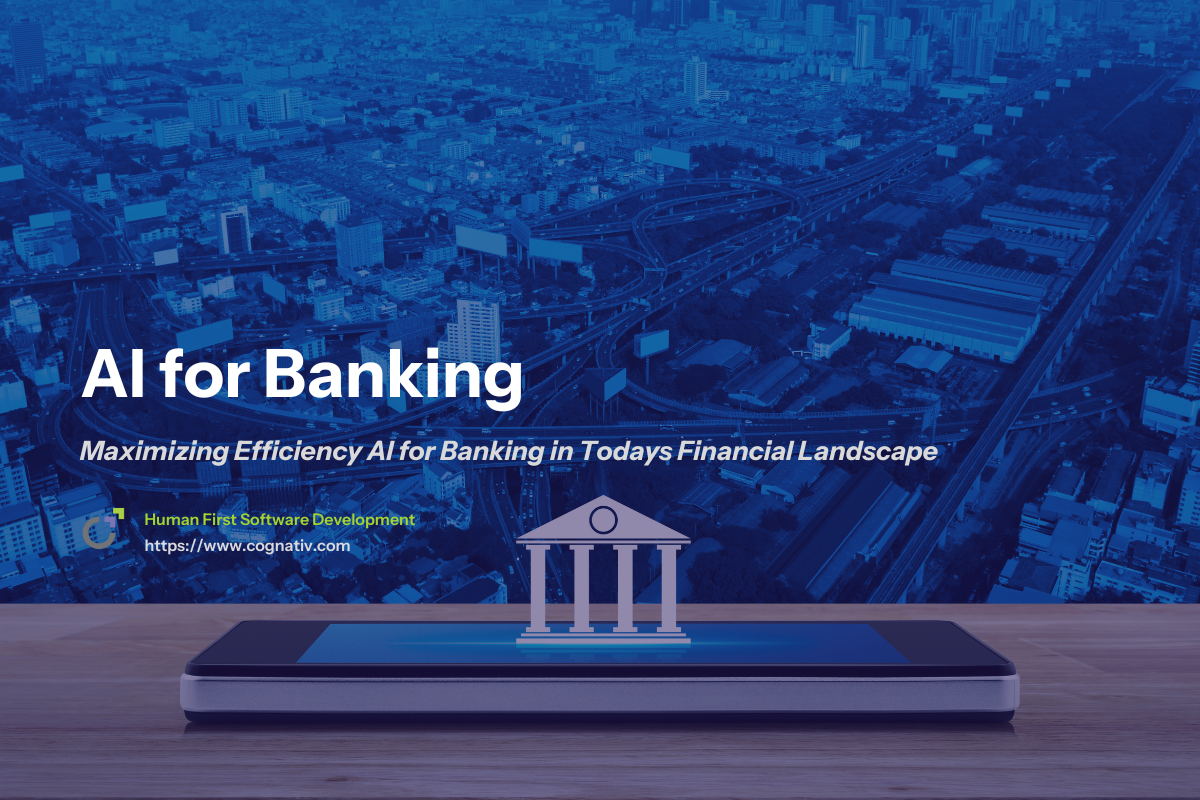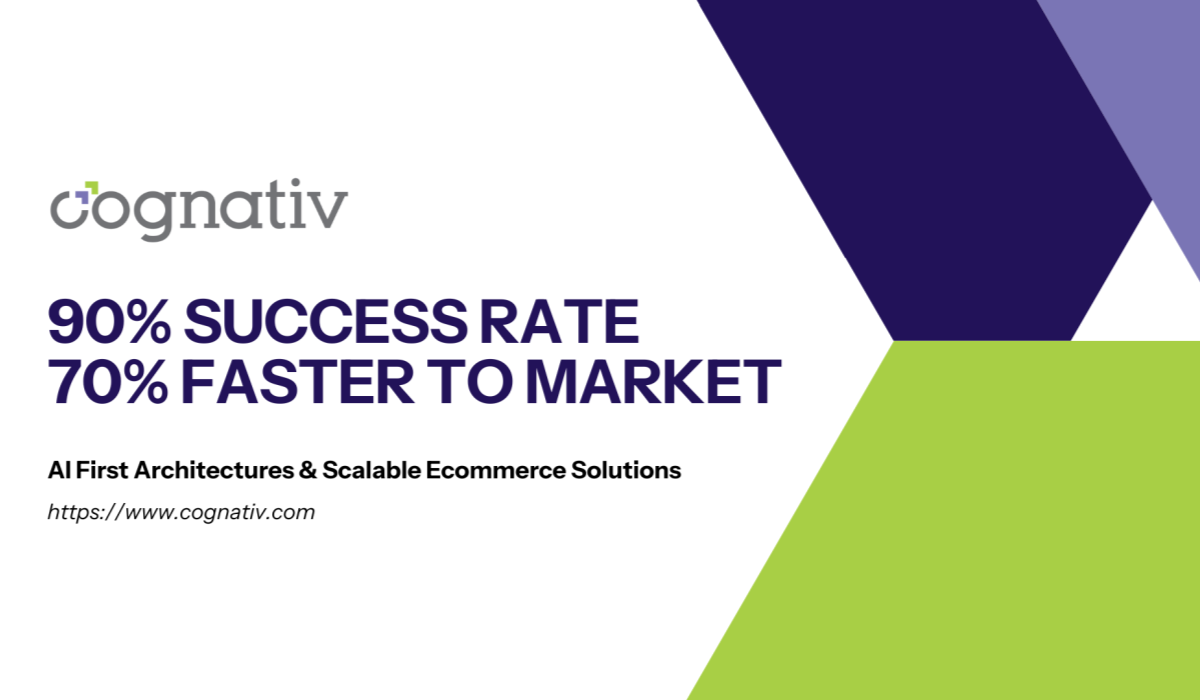

Monday, October 20, 2025
Kevin Anderson
AI for Banking: Transforming Financial Services for a Smarter Future
The banking sector is undergoing one of the most significant technological shifts in its history. Artificial intelligence is no longer just a cost-efficiency lever—it is a strategic foundation for modernizing financial services, improving risk management, and strengthening customer trust.
By embedding AI models, AI agents, and AI technologies into every layer of banking operations, financial institutions are transforming service delivery across the front, middle, and back office. This includes enhancing fraud detection, accelerating credit decisions, optimizing wealth management, and modernizing regulatory compliance frameworks.
Leading banks recognize that AI transformation is not about incremental automation—it’s about rearchitecting their operating models to achieve long-term business value and sustainable growth.

Strategic Benefits of AI Adoption in Banking
The adoption of AI for banking is revolutionizing the financial services industry by enabling banks to harness AI tools and advanced natural language processing (NLP) techniques to analyze vast amounts of structured and unstructured data.
This empowers financial institutions to automate processes, streamline operations, and enhance decision making across multiple domains. By embedding AI capabilities into core workflows, banks can improve risk management, boost client engagement, and unlock new business opportunities—all while ensuring compliance management and security.
These strategic benefits position banks to compete effectively in a rapidly evolving market and deliver superior service to individual customers and the bank's employees alike.
Driving Smarter Decision Making
Banks are moving from descriptive reporting to predictive and prescriptive AI systems that inform real-time decision making. Generative AI and advanced analytics help surface early signals from structured and unstructured data, improving lending accuracy, investment research, and fraud monitoring.
Strengthening Security and Trust
AI-powered automation improves fraud detection, identifies anomalies in transaction patterns, and provides enhanced protection against cyber threats and money laundering schemes. These capabilities enable banks to detect and respond to risks with greater speed and precision.
Enhancing Customer Experience
AI algorithms enable personalized, automated interactions for individual customers, from conversational banking to predictive product recommendations. Real-time engagement tools improve customer satisfaction, boosting retention and loyalty.
Improving Operational Efficiency
AI models automate repetitive tasks—including document processing, compliance reporting, and routine transaction monitoring—freeing employees to focus on strategic and customer-facing activities. This shift delivers measurable gains in operational efficiency across retail banking and investment banking.

AI Transformation: Rewiring the Banking Enterprise
Successful AI transformation requires more than deploying tools; it involves rewiring the organization itself.
-
Vision and Leadership: Senior leadership must align AI strategy with business goals, ensuring AI initiatives support core revenue streams and compliance priorities.
-
Modular Execution: Banks are breaking down functions into smaller, AI-powered modules—integrating generative AI, analytics, and automation to scale efficiently.
-
Cross-Domain Reuse: Leading banks reuse AI components across lending, payments, compliance, and relationship management to accelerate innovation cycles.
-
Talent and Governance: Investment in upskilling and data governance frameworks ensures trust, transparency, and control over AI deployments.
AI transformation is increasingly becoming a board-level conversation—integral to digital maturity and competitive advantage.

Industry Trends: Where AI is Shaping the Future
-
Adoption Acceleration: Over 78% of organizations now use AI in at least one business function—a sharp increase from just a year ago.
-
Capital Allocation: The financial services industry invested $35B in AI in 2023, with the banking sector accounting for $21B.
-
Core Priorities: Customer interactions, investment research, and risk management are the three strategic pillars driving AI adoption in banking.
-
Shift to AI Agents: Banks are adopting agentic AI and multi-agent systems to automate complex tasks such as anti-money laundering and compliance reporting.

Cybersecurity and AI: A Dual Imperative
AI presents both opportunity and risk in cybersecurity. On one hand, it is a powerful shield—detecting anomalies and reinforcing defenses; on the other, it can create new threat surfaces.
-
AI-powered automation detects and prevents financial crime in real time.
-
AI technologies identify suspicious activity, flag impersonation attempts, and help protect customer data.
-
Security strategies must combine AI’s protective power with robust security measures and human oversight to mitigate emerging risks.
This duality is driving banks to pair AI capabilities with hardened data governance frameworks and secure infrastructure.

Anti-Money Laundering and Agentic AI
Anti-money laundering (AML) programs are being transformed by agentic AI:
-
AI agents analyze transaction flows, uncover hidden networks, and act autonomously to flag illicit activity.
-
Multi-agent systems collaborate to review alerts, validate documentation, and communicate findings for regulatory reporting.
-
Leveraging large language models, these agents rapidly process high volumes of unstructured data, improving detection accuracy and response times.
This approach uncovers suspicious patterns that human analysts might miss, while maintaining regulatory compliance through structured human oversight.

Strategic Investment in the AI Stack
To harness AI’s potential, banks are investing strategically across four layers of capability:
-
Engagement Layer — Conversational interfaces and intelligent channels to improve customer interactions.
-
Decision Layer — AI models and predictive analytics that drive better credit, fraud, and risk decisions.
-
Data Layer — Unified governance and structured/unstructured data pipelines for transparency and explainability.
-
Operating Layer — Modular AI infrastructure, AI platforms, and governance to ensure scalability and compliance.
Leading banks build reusable assets across these layers, ensuring that investments drive lasting business value and accelerate innovation.

Navigating AI Risks and Trends
Adopting agentic AI introduces operational, cybersecurity, and regulatory risks. To mitigate these:
-
Banks strategically select AI use cases based on complexity and compliance considerations.
-
AI agents are layered on top of existing legacy systems, enhancing performance without total system replacement.
-
Human oversight remains critical in high-impact workflows—ensuring transparency, accountability, and ethical compliance.
This overlay approach allows banks to achieve step-change improvements in efficiency while maintaining risk controls.

Research and Development Momentum
A recent study by Deloitte involving U.S. bank executives, AI professionals, and vendors revealed:
-
Vast potential for AI agents in automating multi-step workflows
-
High strategic priority on fraud prevention, regulatory compliance, and customer engagement
-
Accelerated experimentation with agentic AI and generative AI use cases
Banks are not just testing AI—they’re integrating it into their core business strategy.

Scalability and Integration for Sustainable Growth
Sustained impact depends on how well banks scale AI across functions:
-
Integration with existing systems ensures interoperability and reduced implementation friction.
-
Continuous learning and updating AI models support agility in the face of new data and regulatory shifts.
-
Building AI talent and governance through effective AI consulting strategies supports responsible, explainable decision-making.
-
Ethical AI practices anchor customer trust and long-term sustainable growth.

AI-Driven Decision Making at Scale
AI and multi-agent systems are changing the way banks make decisions:
-
Predictive AI models excel at structured data analysis.
-
Agentic AI excels at reasoning across nonlinear workflows and multistep processes.
-
Teams see 20–60% productivity gains and ~30% faster decision cycles when AI agents act as virtual coworkers—planning, thinking, and executing within defined guardrails.
This hybrid model combines machine intelligence with human oversight, ensuring quality, compliance, and speed.

The Role of AI in Banking: A Strategic Inflection Point
AI for banking is now a strategic necessity, not a differentiator.
-
It drives innovation across products, processes, and banking operations.
-
It delivers competitive advantage through better forecasting, stronger compliance, and enhanced customer trust.
-
It demands ethical and responsible adoption to balance innovation with security.
To remain leaders, banks must continue investing in AI capabilities, partnerships, and research that drive long-term impact.

The Way Forward with AI: Responsible Acceleration
The future of the banking industry will be defined by how well institutions harness AI’s transformative power while managing its risks:
-
Responsible AI strategies that prioritize transparency, security, and customer trust.
-
Broad adoption of agentic AI and AI agents for automation of complex tasks.
-
Deeper integration with compliance, risk management, and anti-money laundering frameworks.
-
Ethical governance to protect data and ensure accountability.
Banks that align AI strategy with clear business strategy will lead the next wave of technological innovation in financial services.

